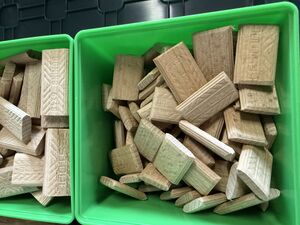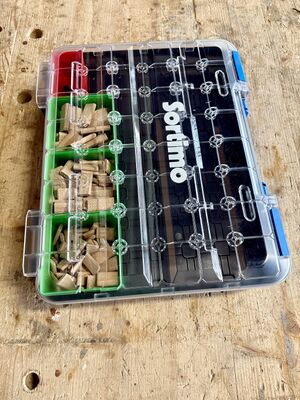Material:Loose Tenons
| MaterialInfoBox Loose Tenons | |
|---|---|

| |
| Synonyms: | Dominos |
| Suggested Tools: | loose tenon joiner |
| Used with: | wood glue |
| Similar (More or Less): | biscuits, dowel pegs |
Loose tenons are a type of joinery technique used in woodworking, particularly for creating strong and precise joints. Instead of cutting a tenon directly into one of the workpieces, a separate piece — called a loose tenon — is inserted into matching mortises cut into both adjoining pieces. This method offers flexibility and ease of alignment compared to traditional mortise and tenon joints.
Loose tenons are often made from solid hardwood for strength and durability. They can be shaped using a router with a specialized jig or cut from stock material. The joint is assembled by applying glue to both mortises and the loose tenon, ensuring a secure bond when the pieces are joined.
This technique is widely used in furniture making, cabinetry, and even structural woodworking, offering strong, hidden joints without the complexity of traditional tenon-cutting methods.
Dominos
Domino loose tenons are a specialized type of loose tenon joinery, developed by the tool manufacturer Festool. They are precisely machined, pre-made tenons designed to work with the Festool Domino joiner — a unique power tool that quickly cuts mortises with high accuracy. The Domino tenons themselves are typically made from hardwood and feature rounded edges, allowing them to fit snugly into the mortises created by the machine.
The advantage of Domino loose tenons is their speed, precision, and strength. Unlike traditional loose tenons that require manual shaping, Domino tenons come in standardized sizes, making assembly more efficient and reliable. They are widely used in furniture making, cabinetry, and joinery, offering strong and seamless connections without the need for complex traditional mortise-and-tenon cutting techniques.
